
Arista EDU Ultra 400 B&W Negative Film, 5x7", 50 Sheets
Key Features
- Capture stunning portraits with the Arista Ultra 400 black and white film's fine grain!
- Enjoy wide latitude in various lighting with this versatile 5x7" black and white film.
- Achieve beautiful tonality in your prints using Arista EDU Ultra 400 film sheets.
- Push/pull this 400 ISO black and white film to adapt to diverse shooting conditions.
- Develop your 5x7" B&W negatives with standard black and white chemistry easily.
- Experience exceptional sharpness in every shot with these 50 sheets of B&W film.
See Options
Need help? Ask our experts.
Questions & Answers
FAQ
What is the recommended developing time for the EDU Ultra 400 B&W Negative Film?
The recommended developing time varies depending on the developer and dilution ratio used. For instance, with Arista 76 Powder at stock dilution, the time is 7 - 8 minutes, and at a 1:1 dilution, it's 12 - 13 minutes. It's important to note that these times are standardized for a temperature of 68 Degree F (20 Degree C), and your developing time may vary based on your environment and equipment.
What developers are compatible with the EDU Ultra 400 B&W Negative Film?
The EDU Ultra 400 B&W Negative Film is compatible with a range of developers, including Arista 76 Powder, Arista Premium Powder, Arista Liquid Film Developer, Arista Premium Liquid Developer, Marathon Film Developer, Ilford ID-11, Kodak D-76, Kodak XTOL, Kodak TMAX Developer, Kodak HC 110, and Agfa Rodinal.
What is the recommended agitation process for the EDU Ultra 400 B&W Negative Film?
It's recommended to agitate continuously for the first 30 seconds of development, followed by 5 to 7 inversion cycles for 5 seconds every 30 seconds for the remainder of the development time. If you're using a rotary processor with continuous agitation, reduce the developing times by 15%.
What is the guarantee on the EDU Ultra 400 B&W Negative Film?
The EDU Ultra 400 B&W Negative Film promises to replace any material found defective in manufacture, labeling, or packaging. This commitment ensures you receive a product that meets your high standards and enhances your photography experience.
Reviews about this item
Review Summary
2024-03-31T19:53:41
A Solid Film, If Somewhat Grainy for the Speed
After having tried Arista EDU's 35mm and 120 films, I figured I'd give their 4x5 film a go as well. It's far less expensive than Kodak, Ilford, and others, and while it does have its quirks and occasional quality control issues, it's an all-around solid performer. The grain structure is a bit larger than ISO 400 films from other brands, but given the sheer size of 4x5 negatives, it still offers smooth tones, great detail, and overall nice images. It also has a wide enough exposure latitude that it lends itself well to using the zone system for metering, exposure, and development. I used this technique to create the attached image. While I might not use this film for the most critical work, it's still good for scanning to print digital negatives for making alternative process prints. With a decent flatbed scanner that can handle film, it's easy to get images that are well over 200 and even 300 megapixels. If you're looking to cut your teeth in large format, I think you'll find this film to be a great bang for the buck.
L.J R.
2021-06-30T12:50:19
Great film.
I have had great luck with this film. Less expensive than Kodak and comes in 2 ISO ratings. The 100 takes especially sharp photos.
Lee B.
2021-02-19T09:21:49
I like this film a lot.
I like this film a lot. I think that Foma might be the manufacturer. I have no issues with it at all, and I think it looks great, develops evenly with out HC-110, and it scans well.
DAVID S.
2021-02-10T07:33:17
Highly recommended! Best value
One of the most affordable film sheets out there for a large format. It always delivers for me and the grain is beautiful, highly recommended
Franklin Y.
2020-07-27T09:22:58
Good for those on a budget or doing exercises to learn to use their camera.
Min much cheaper than most B+W films. It has a strong grain which isn't so much of a concern with large format, but the fact that it is noticeable in a 4x5 image tells you how strong the grain is. I bought this film to use while I familiarized myself with my new (to me) view camera. I'm not likely to use it much in the future as I am seeking minimal grain, high accutance, clear blacks etc. If I want noise in my picture I prefer to add it if and as I want in post processing but not in the film negative.
Andrea Y.
2020-02-29T06:19:10
Accurate tonality
My film developed as I expected. I would recommend this film to a friend!
Sophia K.
Arista Ultra 400 Sheets Specifications
Film Size (W x H)
5 x 7" (127 x 177.8mm)
Film Type
Panchromatic B&W Negative
Film Speed
ISO 400
Film Processing
Standard Black and White Chemistry
Quantity
50 Sheets
UPC Code
614572190474
7 Accessories for Arista EDU Ultra 400 B&W Negative Film, 5x7", 50 Sheets
- All Accessories (7)
- Darkroom Aids (3)
- Bags & Cases (4)
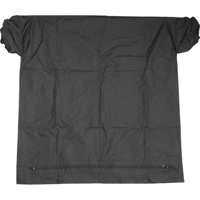
Adorama Large Changing Bag, 27 x 30 in
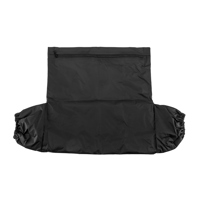
Adorama 16x17" Small Changing Bag for Bulk Loading Film
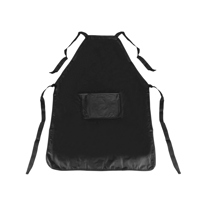
Adorama Darkroom Vinyl Apron
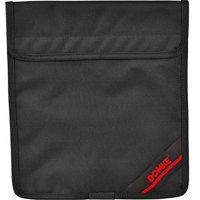
Domke X-Ray FilmGuard Large Bag, Holds 35 Rolls of 35mm Film
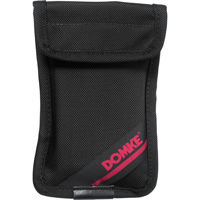
Domke X-Ray FilmGuard Mini Bag, Holds 9 Rolls of 35mm Film
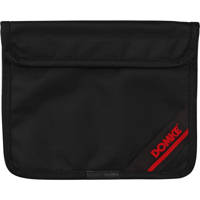
Domke X-Ray FilmGuard Small Bag, Holds 15 Rolls of 35mm Film
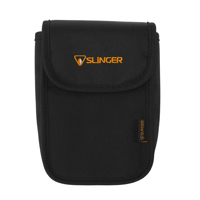
Adorama Slinger 4x6" Filter Pouch, Holds 4x6" 5x Rectangular Filters, Black
About Arista Ultra 400 Sheets
Accurate tonality
By Sophia K.
My film developed as I expected. I would recommend this film to a friend!
Great film.
By Lee B.
I have had great luck with this film. Less expensive than Kodak and comes in 2 ISO ratings. The 100 takes especially sharp photos.
Are you in search of a high-quality B&W negative film for your photography needs Look no further than the EDU Ultra 400 B&W Negative Film, sized at 5x7" and available in a pack of 50 sheets. This product is a part of the esteemed Arista.EDU Ultra line, known for its compatibility with all major processing systems.
The EDU Ultra 400 B&W Negative Film is designed to deliver normal contrast negatives when developed under recommended conditions. These conditions are based on intermittent agitation and standardized for a temperature of 68 Degree F (20 Degree C). However, please note that your developing time may vary depending on your environment and equipment used.
This film works seamlessly with a range of developers. For instance, with the Arista 76 Powder, you can expect a developing time of 7 - 8 minutes when used at stock dilution, and 12 - 13 minutes at a 1:1 dilution. Similarly, the Arista Premium Powder requires 7 1/2 minutes at stock dilution and 8 1/2 minutes at a 1:1 dilution.
Other compatible developers include the Arista Liquid Film Developer, Arista Premium Liquid Developer, Marathon Film Developer, Ilford ID-11, Kodak D-76, Kodak XTOL, Kodak TMAX Developer, Kodak HC 110, and Agfa Rodinal. Each developer requires specific dilution ratios and developing times, which are provided for your convenience.
For optimal results, it's recommended to agitate continuously for the first 30 seconds of development, followed by 5 to 7 inversion cycles for 5 seconds every 30 seconds for the remainder of the development time. If you're using a rotary processor with continuous agitation, reduce the developing times by 15%.
Please note that development times may need adjusting to suit individual processing systems and working practices. If your current system is producing satisfactory results, you can adjust the recommended development times until you achieve the desired contrast.
The EDU Ultra 400 B&W Negative Film is committed to quality, promising to replace any material found defective in manufacture, labeling, or packaging. This commitment ensures you receive a product that meets your high standards and enhances your photography experience.
Arista Ultra 400 Sheets Features
- Traditional black and white film
- Designed for 400 ISO
- Process in standard black and white chemicals
- Available in 35mm, 120 Roll and Sheet Film Sizes
- 35mm x 100 ft. rolls do not have frame numbers or edge-marking.
Key Features
- Capture stunning portraits with the Arista Ultra 400 black and white film's fine grain!
- Enjoy wide latitude in various lighting with this versatile 5x7" black and white film.
- Achieve beautiful tonality in your prints using Arista EDU Ultra 400 film sheets.
- Push/pull this 400 ISO black and white film to adapt to diverse shooting conditions.
- Develop your 5x7" B&W negatives with standard black and white chemistry easily.
- Experience exceptional sharpness in every shot with these 50 sheets of B&W film.
What's in the box:
- 50x Ultra 400 B&W Negative Film Sheets (5x7 ")
